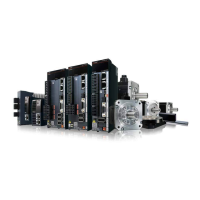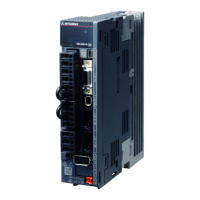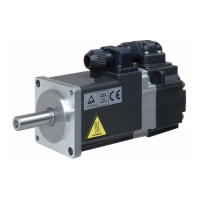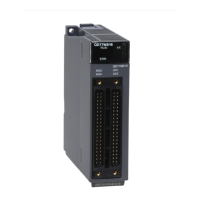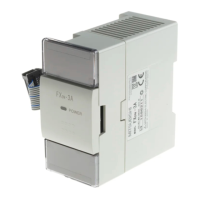3 - 6
3. SIGNALS AND WIRING
3.2.2 Internal speed control mode
LZ
Plate
Servo amplifier
Trouble (Note 6)
Electromagnetic
brake interlock
9ALM
10 SA
11 RD
12 MBR
CN1
Speed reached
Ready
Encoder A-phase pulse
(differential line driver)
15 LA
16 LAR
17 LB
18 LBR
14 LG
21 OP
SD
2m max.
Encoder B-phase pulse
(differential line driver)
Control common
Encoder Z-phase pulse
(open collector)
Encoder Z-phase pulse
(differential line driver)
19
20 LZR
CN1
1
13
DICOM
DOCOM
10m max.
USB cable
(option)
CN3
MR Configurator
Personal
computer
24VDC
RA1
RA2
RA3
RA4
8
4
3
7
Forced stop
Servo-on
Reset
Forward rotation
start
Reverse rotation
start
(Note 3, 5)
5
6
Speed selection 1
EM1
SON
RES
ST1
ST2
SP1
(Note 9,
10, 12)
(Note 4, 9)
(Note 7)
(Note 2)
(Note 9, 11)
10m max.
(Note 1)
(Note 8)
(Note 7)
Control common
CNP1
Note 1. To prevent an electric shock, always connect the protective earth (PE) terminal (terminal marked ) of the servo amplifier
main circuit power connector (CNP1) to the protective earth (PE) of the control box.
2. Connect the diode in the correct direction. If it is connected reversely, the servo amplifier will be faulty and will not output
signals, disabling the emergency stop and other protective circuits.
3. The forced stop switch (normally closed contact) must be installed.
4. Supply 24VDC
10% 200mA current for interfaces from the outside. 200mA is the value applicable when all I/O signals are used.
The current capacity can be decreased by reducing the number of I/O points. Refer to section 3.8.2 (1) that gives the current
value necessary for the interface.
5. When starting operation, always switch on the forced stop (EM1). (Normally closed contacts)
6. Trouble (ALM) turns on in normal alarm-free condition. (Normally closed contact)
7. The pins with the same signal name are connected in the servo amplifier.
8. Use MRZJW3-SETUP221E (C4 or later).
9. This diagram shows sink I/O interface. For source I/O interface, refer to section 3.8.3.
10. The assigned signals can be changed using the settings of parameter No. PD02 to PD14.
11. The assigned signals can be changed using the settings of parameter No. PD15 to PD18.
12. The forward rotation stroke end (LSP) and the reverse rotation stroke end (LSN) automatically switch ON if not assigned to the
external input signals.

